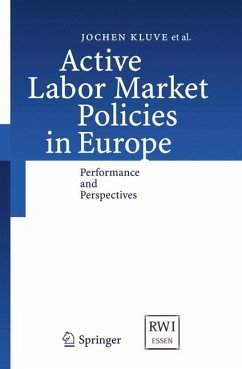Little, however, is known about what each country can learn from experiences in other countries.
This study provides novel insight on this important policy issue by
- discussing the role of the European Commission's Employment Strategy
- reviewing the experiences made in European states
- and giving the first ever quantitative
assessment of the existing cross-country evidence, answering the question "what labor market program works for what target group under what (economic and institutional) circumstances?".
Using an innovative meta-analytical approach, the authors find that rather than contextual factors such as labor market institutions or the business cycle, it is almost exclusively the program type that matters for program effectiveness: While direct employment programs in the public sector appear detrimental, wage subsidies and "Services and Sanctions" can be effective in increasing participants' employment probability.
Dieser Download kann aus rechtlichen Gründen nur mit Rechnungsadresse in A, B, BG, CY, CZ, D, DK, EW, E, FIN, F, GR, HR, H, IRL, I, LT, L, LR, M, NL, PL, P, R, S, SLO, SK ausgeliefert werden.









